"Prologue," he says, "is the only thing so far in my career that I've ever been really been pleased with."
The post Interview: Richard Williams Talks About His Oscar and BAFTA-Nominated Short ‘Prologue’ appeared first on Cartoon Brew.
Add a Comment
"Prologue," he says, "is the only thing so far in my career that I've ever been really been pleased with."
The post Interview: Richard Williams Talks About His Oscar and BAFTA-Nominated Short ‘Prologue’ appeared first on Cartoon Brew.
Add a Comment
Low-budget features and South American contenders are competing alongside Pixar this year.
The post 2016 Oscar Nominations: Animation Analysis appeared first on Cartoon Brew.
Add a Comment
"Inside Out" gets a best screenplay nod, "Minions" gets its first major nomination, and Richard Williams's short "Prologue" is in the running.
The post BAFTA Nominations Announced: Animated Feature, Short, and VFX Nominees appeared first on Cartoon Brew.
Add a CommentThe outspoken animation legend speaks with Cartoon Brew about his new film "The Last Days of Coney Island" and other topics.
Add a CommentWilliams has worked for years to complete this hand-drawn six-minute short, animated entirely by himself.
Add a CommentThe legendary animator responsible for "Who Framed Roger Rabbit," "The Thief and the Cobbler," and so much more is on social media at least.
Add a CommentAnnecy is taking over San Diego Comic-Con as the place for Hollywood to preview its major projects.
Add a CommentThe Annecy International Animated Film Festival has confirmed that animation legend Richard Williams will attend the festival this year.
Add a CommentThese rare videos document the presentation of the animated short Oscar from 1949 through 2013.
Add a Comment"I do think that animation can have a language of its own, rather than simply mimicking live action."
Add a CommentThis Sunday at the BFI Southbank in London, the British Film Institute, in association with the Academy of Motion Picture Arts & Sciences, will present the UK/European premiere of the reconstructed work print of Richard Williams' "The Thief and the Cobbler." Williams will discuss the film afterward with film critic David Robinson.
Add a Comment
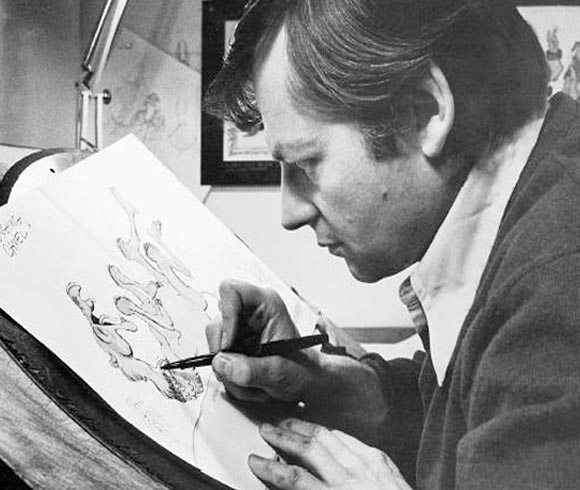
The legendary Richard Williams, eighty years young, will appear in Los Angeles on Friday, October 4th, to celebrate the opening of a new exhibition devoted to his career, as well as take part in the Academy of Motion Picture Arts & Science’s annual Marc Davis Celebration of Animation. The lecture, entitled This Amazing Medium with Richard Williams, sounds like an event worth attending, even if not for the amazing bit casually tossed in at the end of the program description:
Williams will discuss the work that has inspired him and the people who have influenced him. Some of Williams’s favorite clips will be shown to illustrate the artistic and emotional range of this amazing medium, from the charm of Snow White and the Seven Dwarfs and the imagination of Fantasia to the stylized sophistication of Rooty Toot Toot and the subtlety of expression in Toy Story.
Williams will also enlighten audiences about his own work through clips from The Little Island, The Charge of the Light Brigade, A Christmas Carol, The Return of the Pink Panther, Who Framed Roger Rabbit, Circus Drawings and the first theatrical trailer for The Thief and the Cobbler, as well as a preview of his work-in-progress, Prologue.
That’s right, audiences will finally get a glimpse of the secretive film project that Richard has been working on for years. In an interview earlier this year, Williams revealed that he had nearly finished a six-minute prologue to the untitled film project “so if I do drop dead we will still have something.”
Tickets to the lecture will go on sale September 3, and are $5 (general admission)/$3 (students and Academy members). The lecture begins at 7:30pm at the Samuel Goldwyn Theater (8949 Wilshire Blvd, Beverly Hills, CA 90211).
As mentioned above, the Academy will also open a new gallery exhibition on the same night called “Richard Williams: Master of Animation”. The description sounds swell:
Add a CommentTake an exciting visual tour through Richard Williams’s career and experience his master class approach to the art of animation through this dynamic exhibition. Twelve unique zones, accompanied by matching chapters from Richard Williams’s new iPad App, show aspiring animators and pros alike how to direct animation and how Williams approaches character movement, dialogue, animal action and more. On view through December 22, 2013, Tuesday through Friday, 10 a.m. to 5 p.m. and weekends noon to 6 p.m.
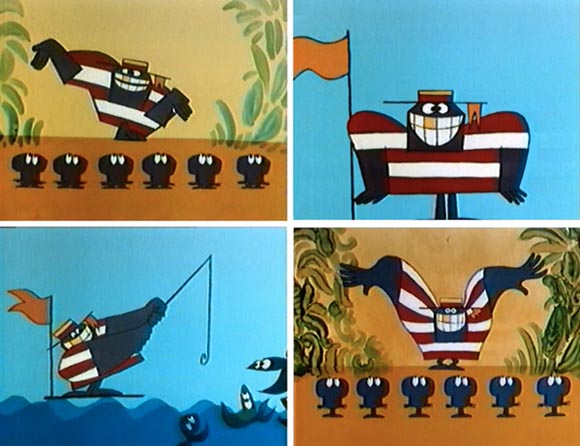
I’ve wanted to watch Errol Le Cain’s Sailor and the Devil ever since I saw these stills on Hans Bacher’s website a few years ago. Animation research Garrett Gilchrist recently unearthed a copy, which although incomplete and poor quality, offers a tantalizing glimpse of this masterful short.
Le Cain made Sailor and the Devil in 1966 while working at Richard Williams’ studio in London. He had been working there for only a year when Williams invited him to direct the film under his supervision. Williams explained the idea behind the project in a documentary: “[Le Cain is] doing everything so he’s getting ten years’ experience in one, and we get a film.”
The results are refreshingly original. Le Cain invents an idiosyncratic style of movement that combines jittery bursts of motion with pleasing dance cycles. When the storm arrives in the film or the skeleton wave threatens to overwhelm the sailor, we encounter a world of pure graphic art. Le Cain uses the full range of color, movement, design, and cinematic devices to create an exciting universe that could exist nowhere but in an animated film.
Le Cain made significant contributions to the production design of The Thief and the Cobbler, and afterward became a well known children’s book illustator. He died in 1989 at the age of 47.
Among the many projects he did with Richard Williams, Le Cain designed these titles for The Liquidator (1965):
There’s a clip of Le Cain and Williams working on Sailor in this documentary from 1966:
(via Michael Sporn)
Add a Comment
As an animation professor at the School of Visual Arts, I try to keep abreast of all the latest animation how-to books. There are many books—excellent and otherwise—that are published regularly, but there is only one author who can tout having had close personal and professional relationships with such Golden Age greats as Milt Kahl, Grim Natwick, Art Babbitt, Emery Hawkins and Ken Harris, not to mention having won two Academy Awards. That animator is, of course, Richard Williams.
Williams’s indispensable The Animator’s Survival Kit is a book that everyone should already own. It should be sitting next to your Illusion of Life, wherever you do your animation. I no longer even list this as a recommended book on my syllabus because I expect students to already own it when they enter my classroom. Thankfully, most artists starting animation school have picked up the book and have already begun applying the knowledge to their projects.
Then, there’s the 16-dvd set of the Animator’s Survival Kit in which Williams teaches a room full of staff at Blue Sky Studios. The $950 price tag on this set has made its amazing wealth of knowledge unattainable to most art students, enlightened amateurs, and even ordinary working professionals.
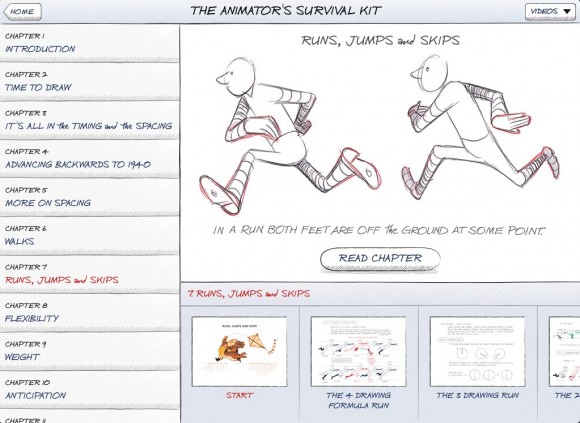
The latest incarnation of the Animator’s Survival Kit is the iPad app, which sells for $34.99 at the iTunes store. The app, published by Faber & Faber, is an interactive blend of William’s excellent book and DVD set. While the app doesn’t include the Blue Sky lectures/William’s dry erase board lessons, it is much more personal in nature, with new clips of Williams speaking directly to the viewer. The app also includes the expanded edition of the book—a treat for all of us first edition book owners—with sections dedicated to animating quadrupeds and winged creatures, as well as extra animation exercises and personal anecdotes from Williams himself.
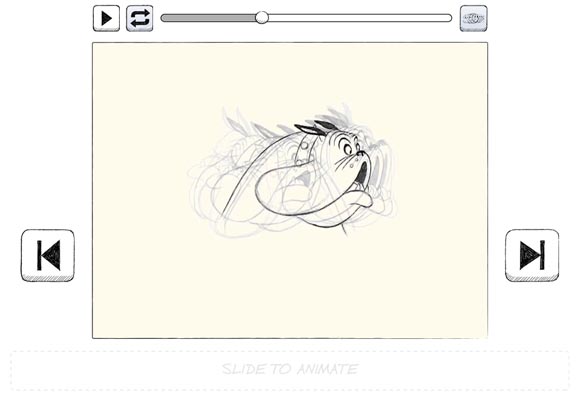
The app interface retains the homey look and feel of the original book, using Williams’s handwriting rather than a print typeface. Each chapter is clearly laid out and accompanied by dozens of clips of animation exercises. One of the real highlights is the playback function available on all the animation exercises which allows the user to play back the animation frame-by-frame, at full speed, or to scrub back and forth through the action. Some of the exercises have an onion-skinning feature that allows the user to closely gauge each drawing in succession, guided by the animation’s motion charts.
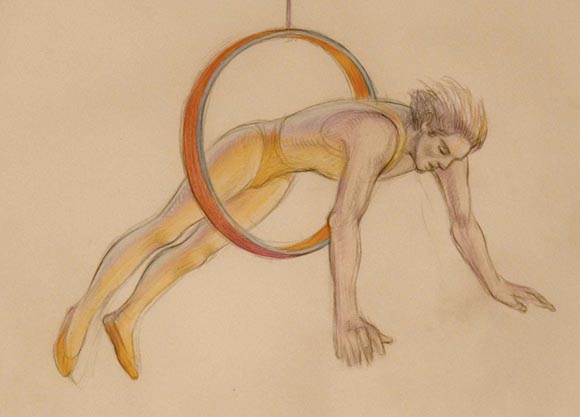
Completing the app is an extras section, showcasing both new and previously seen work by Williams. The most intriguing is the nine-minute short film Circus Drawings that spans sixty years of Williams’ progress as a draftsman. Beginning as a montage of circus drawings by young Williams (oh, to draw like that at twenty-years-old!), the figures come to life by his contemporary hand. It’s an unusual but fun film for any artist with an interest in visual progression.
While I highly recommend this app, I realize that not all students own iPads (or Apple products for that matter). PC users are out of luck for now. Perhaps the next installment will address this discrepancy. For those who are unable to purchase the app, the traditional book still contains all the essentials of Williams’ advice, even if its format is not as glitzy.
The clarity, draftsmanship, and knowledge of Williams comes through in all three formats—book, DVD series and now, iPad app. Who knows what digital learning tools will come next, but Williams’ Survival Kit will continue to be the standard textbook for generations to come.
Purchase the Animator’s Survival Kit app at the iTunes store.
CELIA BULLWINKEL has worked on feature films (Hedwig and the Angry Inch, Chicago 10, Hair High), TV shows (Little Bill, MTV’s Friday, Ugly Americans, Wonder Pets), and far too many commercial projects. “Alpha’s Bet,” her music video collaboration with visual artist and hip-hop pioneer Rammellzee, was exhibited in 2011 at the Museum of Contemporary Art, Los Angeles. She is a faculty member at the School of Visual Arts animation department, and teaches at the Fashion Institute of Technology’s MFA Illustration program. Her first short film, Sidewalk, recently won first place for independent film at the ASIFA-East Animation Festival.
Add a Comment
Whether it be for lack of budget or a desire to take center stage, series creators lending their own voices to their animated television shows has always been fairly commonplace – Mike Judge (Beavis and Butthead, King of the Hill), John Kricfalusi (Ren and Stimpy), Seth MacFarlane (Family Guy) and Trey Parker and Matt Stone (South Park) immediately spring to mind. However, in recent years, more and more feature directors have started getting in on the trend. From throwaway one-liners to continuous roles throughout entire franchises, here is a list of some animation directors and the characters they brought to life in their own films.
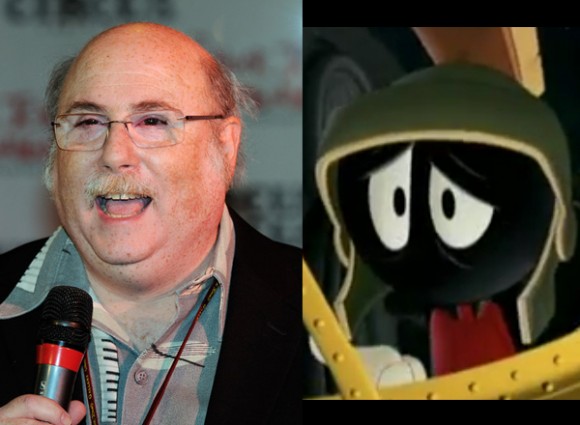 As the animation director for Looney Tunes: Back in Action (2003), Goldberg not only supervised the animation of the WB’s classic characters but he voiced some of them as well. Goldberg recorded the dialogue of Marvin the Martian, Tweety Bird and Speedy Gonzalez.
As the animation director for Looney Tunes: Back in Action (2003), Goldberg not only supervised the animation of the WB’s classic characters but he voiced some of them as well. Goldberg recorded the dialogue of Marvin the Martian, Tweety Bird and Speedy Gonzalez.
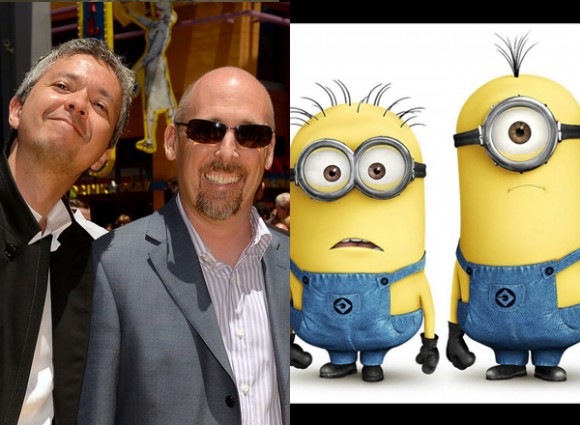 The distinctive sputters, spurts and high-speed mutterings of The Minions in Despicable Me (2010) and Despicable Me 2 (2013) belong to the films’ co-directors Pierre Coffin (above left) and Chris Renaud. And as the character’s popularity grows, so does their vocal commitment, as the two will reprise their roles in next year’s prequel Minions.
The distinctive sputters, spurts and high-speed mutterings of The Minions in Despicable Me (2010) and Despicable Me 2 (2013) belong to the films’ co-directors Pierre Coffin (above left) and Chris Renaud. And as the character’s popularity grows, so does their vocal commitment, as the two will reprise their roles in next year’s prequel Minions.
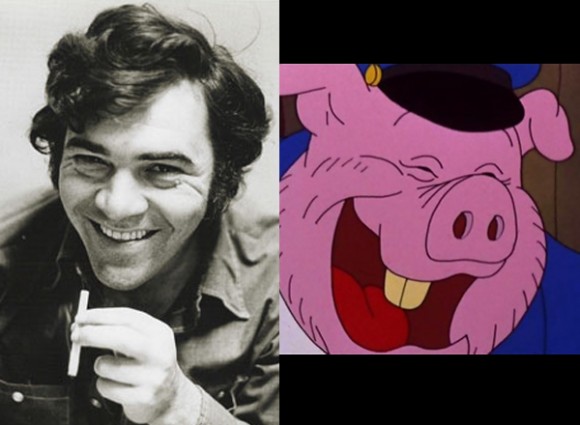 In his debut film Fritz the Cat (1972), director Ralph Bakshi voiced one of the boorish antagonist Pig Cops, who is also referred to as “Ralph” multiple times in his scenes.
In his debut film Fritz the Cat (1972), director Ralph Bakshi voiced one of the boorish antagonist Pig Cops, who is also referred to as “Ralph” multiple times in his scenes.
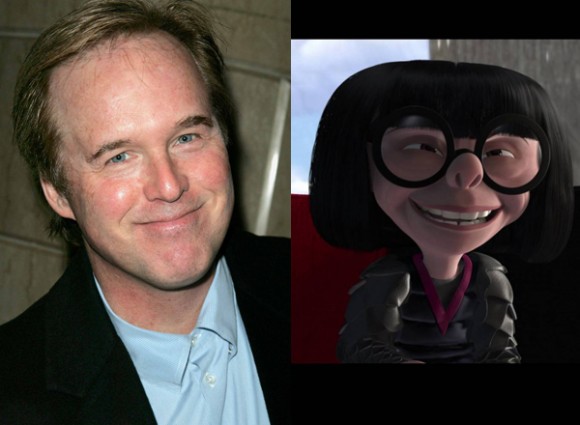 Agnes Gooch, Edith Head, Patricia Highsmith, Linda Hunt – when it comes to figuring out who inspired the character of Edna Mode, people love to toss out many names, but in the end, the cutthroat designer of superhero fashion was brought to life by The Incredibles (2004) director Brad Bird.
Agnes Gooch, Edith Head, Patricia Highsmith, Linda Hunt – when it comes to figuring out who inspired the character of Edna Mode, people love to toss out many names, but in the end, the cutthroat designer of superhero fashion was brought to life by The Incredibles (2004) director Brad Bird.
 Rich Moore, director of Wreck-It Ralph (2012) provided the dreary monotone of acidic jawbreaker Sour Bill, the henchman to the bombastic King Candy.
Rich Moore, director of Wreck-It Ralph (2012) provided the dreary monotone of acidic jawbreaker Sour Bill, the henchman to the bombastic King Candy.
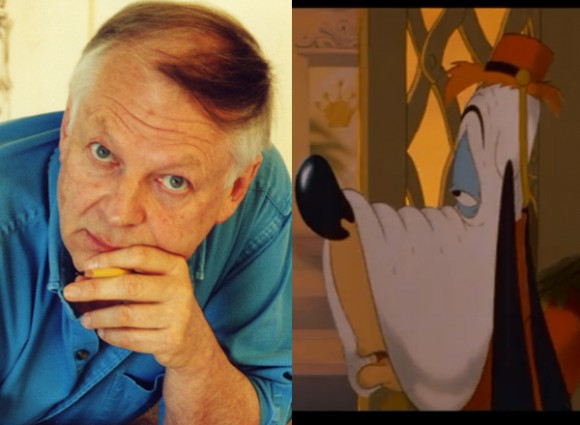 Even to this day, the toon celebrity cameos in Who Framed Roger Rabbit(1988) remain some of the best nods to the golden age of cartoons, especially that of Droopy Dog, who gets his opportunity to best Eddie Valiant with some traditional ‘toon high-jinks as a tricky elevator operator, sluggishly voiced by the film’s animation director Richard Williams.
Even to this day, the toon celebrity cameos in Who Framed Roger Rabbit(1988) remain some of the best nods to the golden age of cartoons, especially that of Droopy Dog, who gets his opportunity to best Eddie Valiant with some traditional ‘toon high-jinks as a tricky elevator operator, sluggishly voiced by the film’s animation director Richard Williams.
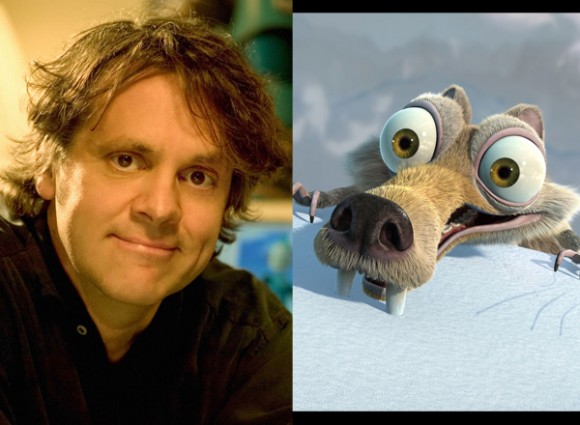 What began as the high-strung snivels and snarls of Scrat in Ice Age (2002) has become a second career for director Chris Wedge who has gone on to vocally personify the prehistoric rodent in 3 sequels, 6 short films, 2 video games and in a walk-on role in an episode of Family Guy.
What began as the high-strung snivels and snarls of Scrat in Ice Age (2002) has become a second career for director Chris Wedge who has gone on to vocally personify the prehistoric rodent in 3 sequels, 6 short films, 2 video games and in a walk-on role in an episode of Family Guy.
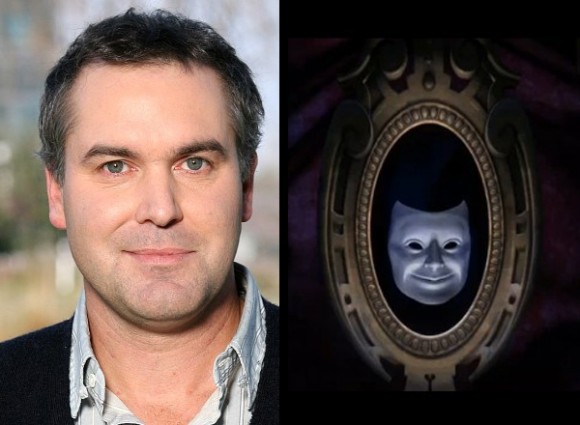 Royal messengers, tower guards, army commanders, friars and penguins, story artist Chris Miller has lent his voice-over skills to numerous animated films, most notably his returning roles as Geppetto and The Magic Mirror in the Shrek franchise, including Shrek the Third (2007), which he co-directed.
Royal messengers, tower guards, army commanders, friars and penguins, story artist Chris Miller has lent his voice-over skills to numerous animated films, most notably his returning roles as Geppetto and The Magic Mirror in the Shrek franchise, including Shrek the Third (2007), which he co-directed.
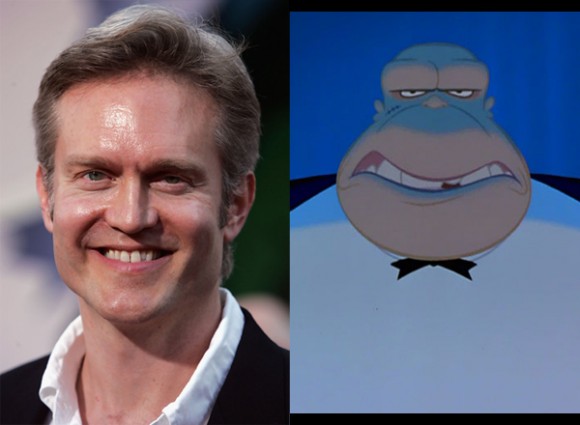 The often ignored and underrated animated film Cats Don’t Dance (1997) features some beautiful hand-drawn work and stellar vocal performances, including that of director Mark Dindal as the tight-lipped bodyguard/butler Max.
The often ignored and underrated animated film Cats Don’t Dance (1997) features some beautiful hand-drawn work and stellar vocal performances, including that of director Mark Dindal as the tight-lipped bodyguard/butler Max.
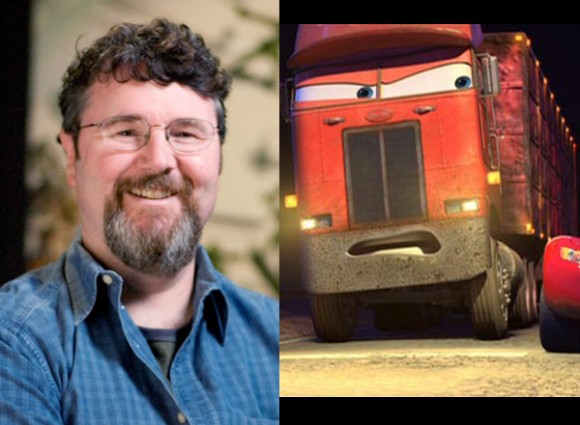 Pixar story artist, the late Joe Ranft, brought a handful of memorable animated characters to life, including Heimlich (A Bug’s Life), Wheezy the Penguin (Toy Story 2) and Jacques the Cleaner Shrimp (Finding Nemo). But it was in Cars (2006), which he co-directed, that he voiced three characters including the semi-truck Jerry Recycled Batteries.
Pixar story artist, the late Joe Ranft, brought a handful of memorable animated characters to life, including Heimlich (A Bug’s Life), Wheezy the Penguin (Toy Story 2) and Jacques the Cleaner Shrimp (Finding Nemo). But it was in Cars (2006), which he co-directed, that he voiced three characters including the semi-truck Jerry Recycled Batteries.
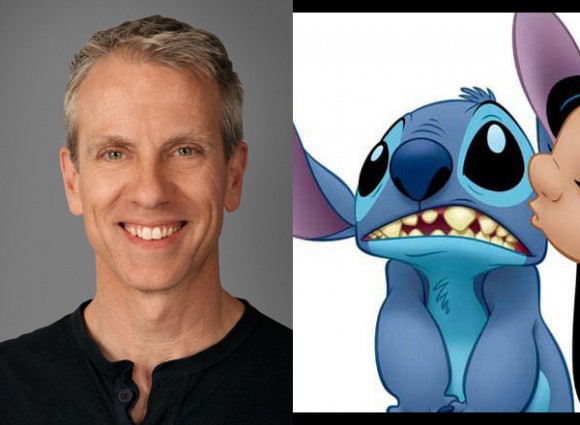 In Lilo & Stitch (2002) co-director Chris Sanders takes on the nuanced role of Alien Experiment 626, aka “Stitch,” who escapes from an intergalactic prison only to find himself trapped on the Hawaiian island of Kauai.
In Lilo & Stitch (2002) co-director Chris Sanders takes on the nuanced role of Alien Experiment 626, aka “Stitch,” who escapes from an intergalactic prison only to find himself trapped on the Hawaiian island of Kauai.
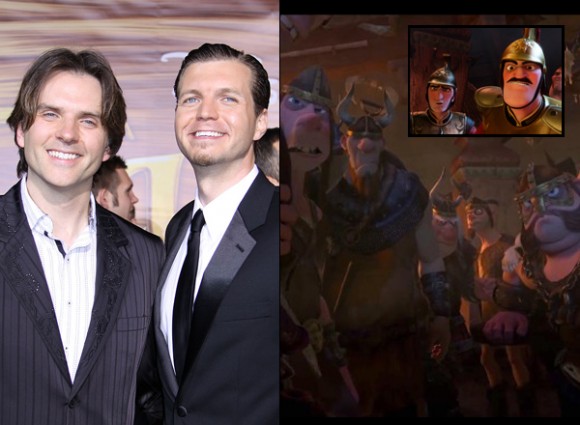 Nathan Greno (above right) and Byron Howard not only paired up as co-directors of Tangled (2010) but also doubled as duos of Thugs and Guards in the animated picture.
Nathan Greno (above right) and Byron Howard not only paired up as co-directors of Tangled (2010) but also doubled as duos of Thugs and Guards in the animated picture.
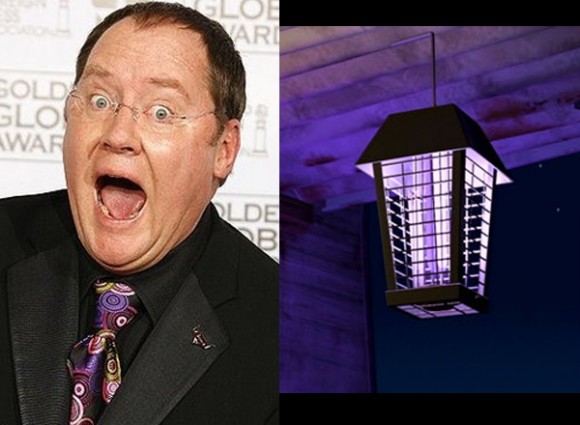 With five features under his belt, John Lasseter has had plenty of opportunity to throw himself behind the microphone, however upon review of his filmography, you’ll find he has chosen his roles very carefully, as the role of John Lassetire in Cars 2 (2011) and the hilariously bug-zapped Harry the Mosquito in A Bug’s Life (1998).
With five features under his belt, John Lasseter has had plenty of opportunity to throw himself behind the microphone, however upon review of his filmography, you’ll find he has chosen his roles very carefully, as the role of John Lassetire in Cars 2 (2011) and the hilariously bug-zapped Harry the Mosquito in A Bug’s Life (1998).
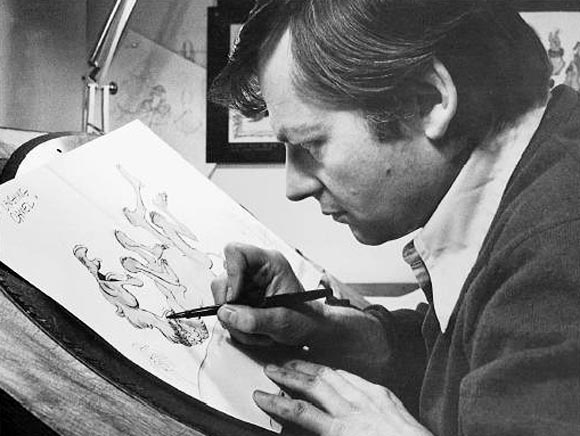
On Friday, the Guardian published a long profile of Richard Williams. It’s an inspiring read even if you’re familiar with the man.
Among the newsworthy tidbits is that Williams has in the recent past animated some of Banksy’s graffiti for a medical conference. The most intriguing revelations for Williams admirers though are reserved for the last paragraph of the article, in which Williams discusses his long-term secret animation project. The recently-turned-80 Williams has puckishly subtitled the project, Will I live to finish it. From the article:
Add a CommentHe is reluctant to say too much about what “the big film” is about – “we had so much publicity about The Thief and then it went wrong” – but says it is being made in chapters – “so if I do drop dead we will still have something” – and that a six minute prologue, which will be a short film in its own right, will soon be ready. “What I’m interested in is that nobody has been able to handle realism. It’s just been embarrassing. So I’m doing graphic realism, these things are obviously drawings, but it will go into adult territory and will combine different styles. I want something that will be grim, but also funny and salacious and sexy. I can’t tell you how excited I am by it. No one has been able to do this and I know that I can. All I need is some time and five or six assistants who can draw like hell.”
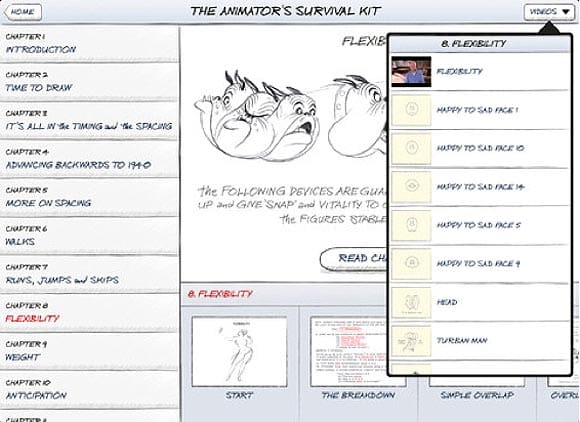
The Richard Williams Animator’s Survival Kit iPad app that we announced a couple months ago is out today. It’s available for $34.99 on the Apple Store, a bargain when you consider the DVD version of the Survival Kit costs nearly a grand. If you’re on the fence about splurging, you can also download a free sample version.
Add a Comment
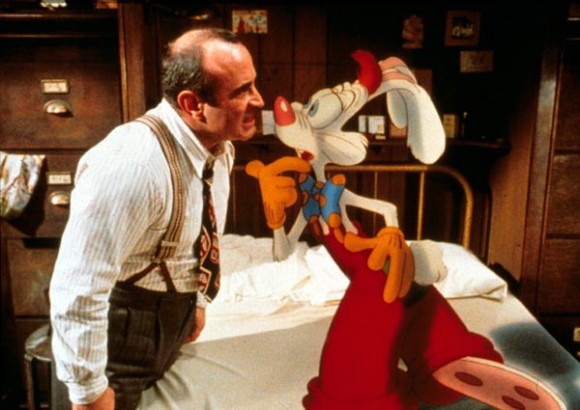
ROSS ANDERSON is currently writing the definitive book about the making of Roger Rabbit, beginning with Gary K. Wolf’s novel and Disney’s early Roger Rabbit development unit, continuing with the production of “Who framed Roger Rabbit”, and through the follow-up shorts, merchandising and theme park presence, and development work on sequels. He wrote this piece exclusively for Cartoon Brew about the 25th anniversary screening of “Roger Rabbit” that took place last week in Los Angeles.
On Thursday evening, April 4th, the Academy of Motion Picture Arts and Sciences hosted the first public screening of the new digital print of Who framed Roger Rabbit. The preparation of the digital print coincides with the release of the 25th anniversary Blu-ray edition of the film, and the Academy hosted a terrific show.
When the tickets were made available on-line they sold out within a day or two. The film was enormously popular when it was released and it has been a touchstone for film and animation enthusiasts ever since. I can’t take credit for the touchstone/Touchstone remark—that came from Rich Moore, director of Wreck-It Ralph, who was the moderator of the panel discussion that followed the film screening.
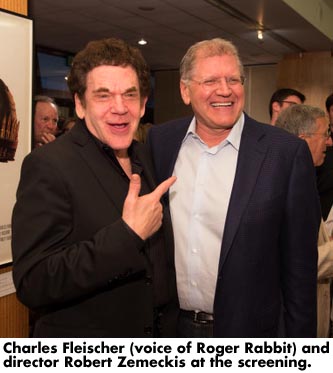 The event attendees were polite and mature in their behavior, although many of them hadn’t been born when the film was released. The enthusiasm for the film has some of the earmarks of coltishness, but it is not as though the adoration is a personal ‘find’ and a delight against all reason. There are ample reasons to delight in the film, and everybody has their own joys that they find in it. Mine – is that I had been a life-long animation enthusiast who found it difficult to share my enthusiasm with friends. I was in university when Robin Hood was released. I would have been harassed unmercifully if my interest in Disney animation had become known to my dorm-mates. Who framed Roger Rabbit made animation ‘cool’ again…and it made money, which increased the enthusiasm of the studios. Many people in the animation industry credit the film with ushering in a silver age of feature animation.
The event attendees were polite and mature in their behavior, although many of them hadn’t been born when the film was released. The enthusiasm for the film has some of the earmarks of coltishness, but it is not as though the adoration is a personal ‘find’ and a delight against all reason. There are ample reasons to delight in the film, and everybody has their own joys that they find in it. Mine – is that I had been a life-long animation enthusiast who found it difficult to share my enthusiasm with friends. I was in university when Robin Hood was released. I would have been harassed unmercifully if my interest in Disney animation had become known to my dorm-mates. Who framed Roger Rabbit made animation ‘cool’ again…and it made money, which increased the enthusiasm of the studios. Many people in the animation industry credit the film with ushering in a silver age of feature animation.
Academy member and veteran animation director Bill Kroyer introduced the screening. Bill was a young animator at the Disney studio prior to the first onslaught of CalArts grads, who included John Lasseter, Tim Burton, Brad Bird, Henry Selick, John Musker, Jerry Rees, and Darrell Van Citters. They were all frustrated with how Disney animation was functioning in the early-1980s.
Tom Wilhite, the young Disney Live-Action Studio Head, saw their frustration and did what he could to enable projects that would satisfy their creative juices and keep them at the studio. Aside from John Musker, they were all eventually fired or left the studio of their own accord, but out of that early grouping came Tim Burton’s Vincent and Frankenweenie and John Lasseter’s The Brave Little Toaster, which Wilhite eventually produced, with Jerry Rees directing, as ‘Hyperion Pictures’, after he, too, left Disney. Wilhite also brought Tron to the Disney studio and was responsible for setting up the Roger Rabbit development unit at Disney in 1981, helmed by Darrell Van Citters.
Bill Kroyer was one of the first ‘animators’ to do computer animation. He and Jerry Rees were assigned to the Tron production to work with the early CGI providers. The computer software at that time was not intuitive at all, so there was more hand-drawn ‘logistical guidance’ for the programmers than most people realize. That was Bill and Jerry. Their involvement also fired up John Lasseter’s interest in computer animation. The Brave Little Toaster was intended to be the first full length CGI animated feature.
Tron was released in 1982, at a time that the Darrell Van Citters’ Roger Rabbit development unit was getting into full swing. Screenwriters Peter Seaman and Jeffrey Price had just come off of Trenchcoat, a Disney mystery/comedy, and Wilhite assigned them to prepare a screenplay for Roger Rabbit. At that time Wilhite also sent memos to Darrell and Marc Stirdivant, the Disney house producer assigned to the development unit, to scoop up Bill Kroyer, Jerry Rees, John Lasseter, Ron Clements, Randy Cartwright, Mike Gabriel, and Glen Keane for the Roger Rabbit unit. Other things were happening at the studio, and soon most of those people were gone… but wouldn’t that have been something?
Back to the screening – Bill Kroyer called out many of the attendees who had been instrumental in making the film. This list isn’t exhaustive, but those who did stand up included voice actors Charles Fleischer (Roger Rabbit, Benny the Cab and others), June Foray (Lena Hyena), and Tony Anselmo (Donald Duck), animators Andreas Dejas and Nik Ranieri, screenwriters Seaman and Price, editor Artie Schmidt, London studio manager Max Howard, producers Steve Starkey and Don Hahn, and, of course, director Bob Zemeckis.
The film screening was wonderful. The digital print was clear and fresh and the colors popped out at you. Not having seen the film on the big screen for twenty-five years, I found it difficult to discern whether the viewing pleasure was due to anything particular associated with the digital print or simply that I was sharing the big screen experience with a room full of similarly enthusiastic viewers. The quality aspects of the digital restoration were being hotly debated within knots of people after the screening was over.
A panel discussion followed the screening. It was hosted by Rich Moore and included Peter Seaman, Jeffrey Price, Andreas Deja, Charles Fleischer, Joanna Cassidy, Steve Starkey, Bob Zemeckis, and Don Hahn. There were many reminiscences from the production. Most of them were well known to the real Roger Rabbit enthusiasts, but the ones who resonated the most for me were those that put the ‘25-years’ into perspective. We have heard about Who framed Roger Rabbit having way more special effects than Star Wars, but it was also one of the last of the great ‘optical’ effects films. It was a different era.
Zemeckis reminisced that, “we had FedEx and ¾” tape – we had technology by the tail.” He spoke about the first finished animation that came over from the London studio unit. It was the portion of the introductory Something Cookin’ cartoon in which the chili sauce falls off the shelf in Roger’s kettle-head. The British animators spelled ‘chili’ in the British manner, with two l’s (‘chilli’). The scene had to be completely re-animated.
In the scene which the camera trucks over the newspaper headlines showing the Toon cases solved by Valiant & Valiant on Eddie’s desk, the London studio had used the banners of LA newspapers of the time (1947), without having asked permission of the newspapers. One newspaper ended up refusing permission to use their banner – and this complicated scene had to be completely re-shot. Another anecdote was that Paul Newman had been considered for the role of Eddie Valiant. Charles Fleischer immediately shot back that Judge Doom would then have had to use ‘dressing’ instead of ‘dip’.
Don Hahn made a call out for Richard Williams, who recently celebrated his 80th birthday. Richard had hoped to attend but was unable to make it. Also, during the panel discussion, it became clear that the presence of Bob Hoskins was greatly missed. He was universally acclaimed for his work on the film. I must say that the greatest benefit that I saw with the digital presentation was in the close-ups on the actors’ faces. There was sublime acting and emotion that contributed enormously to the ‘reality’ of their interaction with the ’toons. We ‘felt’ it and it was an integral aspect of the great ‘conceit’ of the live-action/toon combination, but the subliminal effects were often lost in the chaos of the action. In this viewing, they popped out at me.

It was a great night. Following the conclusion of the panel discussionm, the many Roger Rabbit production participants reunited on stage to catch up on 25 years. The ‘celebrities’ amongst them were cornered for autographs, and the ‘no photography’ policy of the Academy theater was completely thrown out the window as the hundreds of cameras that were spirited into the theater finally came out.
A group shot was hastily organized and there were many more Roger Rabbit alumni present than had been called out during the evening’s introduction. I counted at least twenty-five alumni. I had the pleasure of speaking to many of them and seeing several of them the next day. It was a special night for Roger Rabbit fans and a special night for those who were involved in making it.
Add a Comment
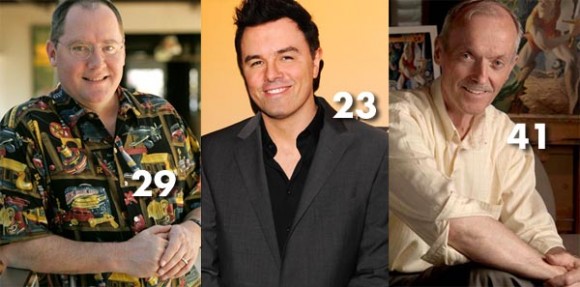
“Animation is a young man’s game,” Chuck Jones once said. There’s no question that animation is a labor-intensive art that requires mass quantities of energy and time. While it’s true that the majority of animation directors have directed a film by the age of 30, there are also a number of well known directors who started their careers later.
Directors like Pete Docter, John Kricfalusi and Bill Plympton didn’t begin directing films until they were in their 30s. Don Bluth, Winsor McCay and Frederic Back were late bloomers who embarked on directorial careers while in their 40s. Pioneering animator Emile Cohl didn’t make his first animated film, Fantasmagorie (1908), until he was 51 years old. Of course, that wasn’t just Cohl’s first film, but it is also considered by most historians to be the first true animated cartoon that anyone ever made.
Here is a cross-selection of 30 animation directors, past and present, and the age they were when their first professional film was released to the public.
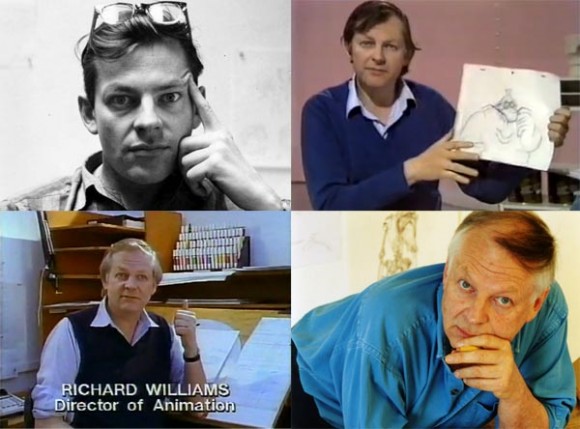
Today marks the 80th birthday of legendary animator, director and educator Richard Williams. Born on March 19, 1933, in Toronto, Canada, Williams may be (along with Hayao Miyazaki) the most important and influential living animator today.
His credits stretch across decades and include features (Raggedy Ann & Andy: A Musical Adventure, The Thief and the Cobbler, Who Framed Roger Rabbit), TV specials (A Christmas Carol, Ziggy’s Gift), movie titles (The Charge of the Light Brigade, The Pink Panther Strikes Again), shorts (The Little Island, Love Me Love Me Love Me) and thousands of TV commercials.
He is the bridge between the Golden Age of hand-drawn animation and today’s endless stream of computer-generated blockbuster features. He has spent decades imparting the knowledge that he learned from the greats (Art Babbitt, Grim Natwick, Milt Kahl, Ken Harris, Emery Hawkins) to younger generations. For decades, he ran a studio that was as much a school as it was a production studio. Later, he traveled around the world to teach masterclasses, and more recently, he has reached his largest audience through the bestselling book The Animator’s Survival Kit.
His legacy in animation will be debated for decades to come, as will his inability to finish his most ambitious feature film project, but I would argue that his greatness does not stem from any single project. More than any film he made, it is Williams’ lifelong commitment to craft and his pursuit of excellence that will be remembered. He has unwaveringly promoted and upheld a standard of quality throughout his career, even during eras when such standards were considered unfashionable.
Williams’ ambition to create spectacular animation has always trumped all other considerations. Take the following commercial he single-handedly animated in six weeks:
In another animator’s hands, this would have been another instantly forgettable TV spot, but Williams turned it into one of the most breathtaking pieces of action animation ever committed to film, complete with moving camera, animation on ones, and exquisite rendering. In comical contrast to the prosaic product being advertised, the animation is an epic achievement.
Williams’ best work, be it commercials or fragments of Thief and the Cobbler, offer an indescribably exhilarating thrill. It is the stuff that animation lovers live to see and of which we see far too little. One of Williams’ mentors, Art Babbitt, said, “Everything we’ve done up till now hasn’t even begun to scratch the surface of what animation can do.” Williams has been scratching away at that surface for the past sixty years, and has time and time again revealed new possibilities that were previously inconceivable. You can spend hours exploring Williams’ career output at the indispensable Thief Archive on YouTube, including this peerless sequence of pure visual excitement from Thief and the Cobbler:
Richard Williams’ current project is a soon-to-be-released interactive iPad app version of his Animator’s Survival Kit which will also include a copy of his new animated short Circus Drawings.
Happy Birthday to Richard Williams, an animation rebel and master.
Add a Comment
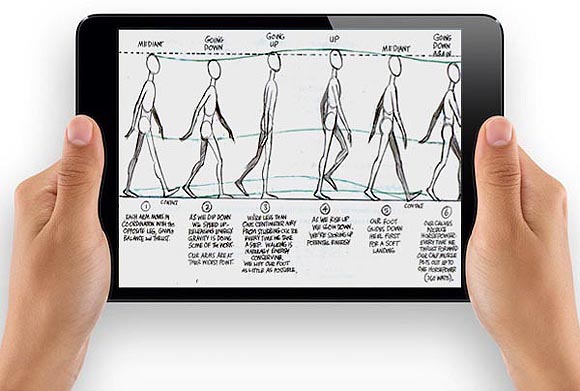
Coming soon: the iPad app version of Richard Williams’ indispensable The Animator’s Survival Kit. The publisher, Faber and Faber, hasn’t set a price or exact release date, but it’s being timed to roughly coincide with Williams’ 80th birthday next month.
Key features of the app will include:
Below are a couple stills from Circus Drawings, the new Richard Williams short that will be included on the app:


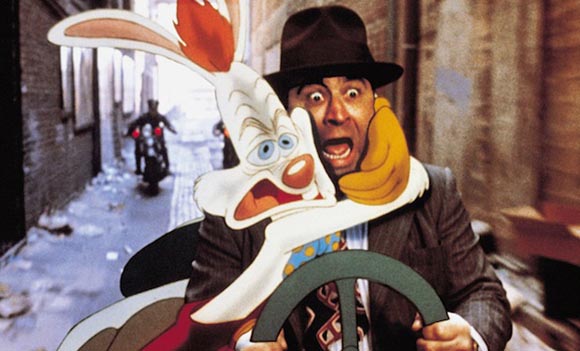
To celebrate the upcoming 80th birthday of Richard Williams, 92Y Tribeca will present three evenings of screenings devoted to his work:
Wednesday, February 27: A screening of Who Framed Roger Rabbit on 35mm. (It is the film’s 25th anniversary this year.)
Thursday, February 28: An evening of Richard Williams rarities including his ambitious early short The Little Island (1958). The program will be introduced by NY animation director (and former Williams employee) Michael Sporn.
Friday, March 1: A screening of the fantastic new documentary Persistence of Vision, about Williams’ decades-long attempt to create his personal masterpiece The Thief and the Cobbler. I’ll be hosting a discussion with the director of the documentary, Kevin Schreck, after the 7pm screening.
92Y Tribeca is located in Manhattan (200 Hudson Street, NY, NY 10013). Tickets for each screening are $12 and available on the 92Y Tribeca website.
Add a Comment
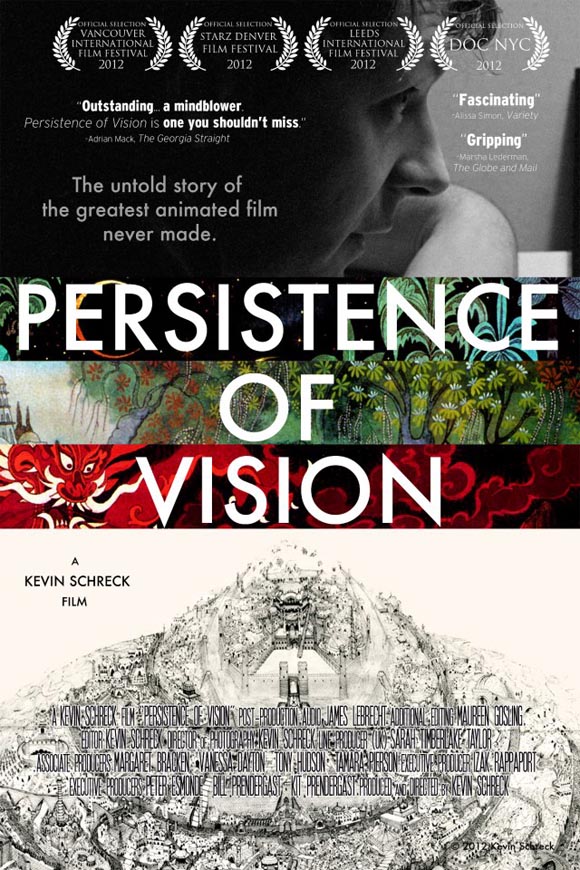
This Friday, November 9th, New Yorkers can see the East Coast premiere of Kevin Schreck’s new documentary Persistence of Vision, about Richard William’s never-completed-as-envisioned The Thief and the Cobbler. Williams worked on the film from the mid-1960s through the early-1990s before it was taken away from him and finished by producer Fred Calvert.
I’m really looking forward to seeing Schreck’s film, which includes interviews with many people who worked on the film, though not Williams who declined to participate. If the film is playing at a festival near you, see it! The documentary likely won’t be released on home video anytime soon because Schreck didn’t obtain permission from the copyright holders whose animation appears in the film. Sadly, this is just about the only way nowadays to do honest projects of a historical nature since the handful of conglomerates that own vast film libraries don’t understand the value of cooperating with historians and researchers to present an accurate portrait of animation history.
The film screens on Friday at 9:15pm at the SVA Theater (333 W. 23rd Street, NY, NY). The director will do a Q&A after the film. Tickets cannot be purchased at the theater. They must be purchased in advance, either at the IFC Center or online HERE. There’s also a Facebook page for the film where you can bug the filmmakers to bring a screening to your city.
Add a Comment
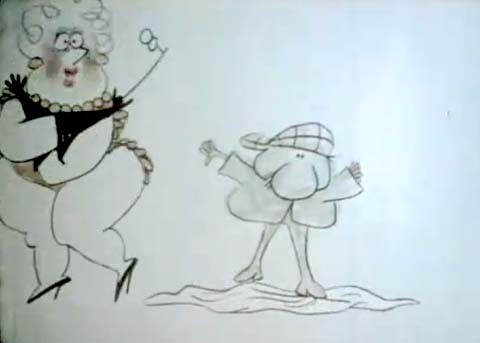
I never noticed until a few nights ago that Richard Williams’s rarely seen 1962 Love Me, Love Me, Love Me can be viewed online. It was uploaded onto YouTube by the Thief Archive, which is a remarkable collection of over 300 videos related to the life and work of Williams.
Cartoon Brew: Leading the Animation Conversation |
Permalink |
No comment |
Post tags: Richard Williams

Richard Williams in October 2010
Harvey Deneroff reported on his blog that 77-year-old animation legend Richard Williams premiered a new short called Circus Drawings at the 29th Pordenone Silent Film Festival in Italy last month.
In Williams’ own words, the film had been gestating for a long time:
“In 1953 I was a young artist of twenty, living in Spain near a village circus, where I drew the acrobats, clowns and onlookers. Twelve years later I filmed my drawings to an original score but didn’t complete the film. Now that I’m 77, I’ve finished the film by animating my original drawings.”
More details about Circus Drawings, taken from the film festival catalog, can be found on this blog. And while we’re on the subject of Williams, may I also recommend this interview with him from a few months ago.
Add a Comment